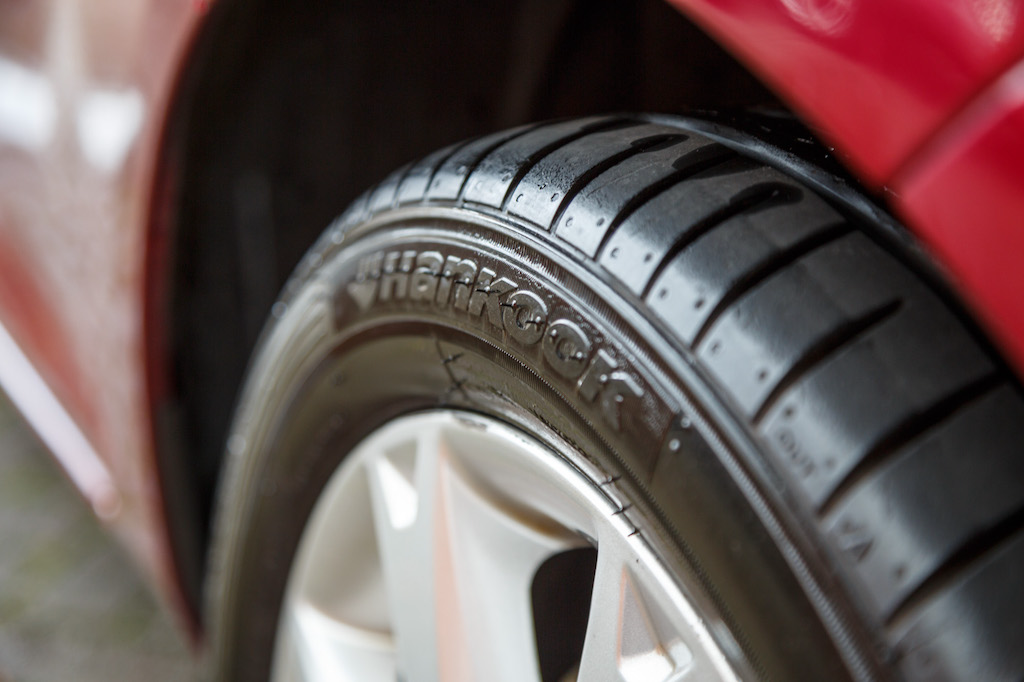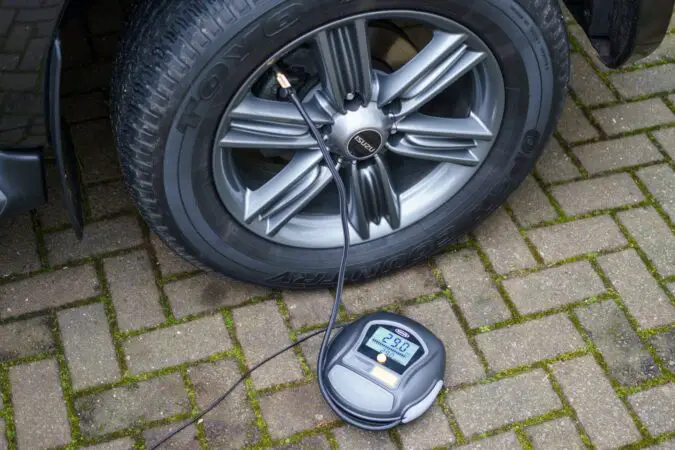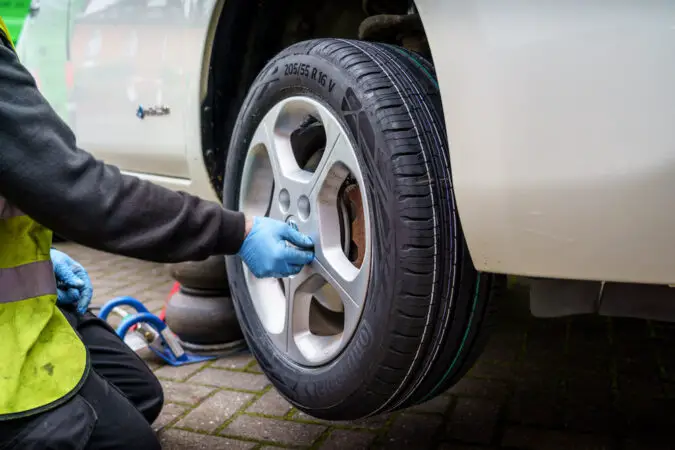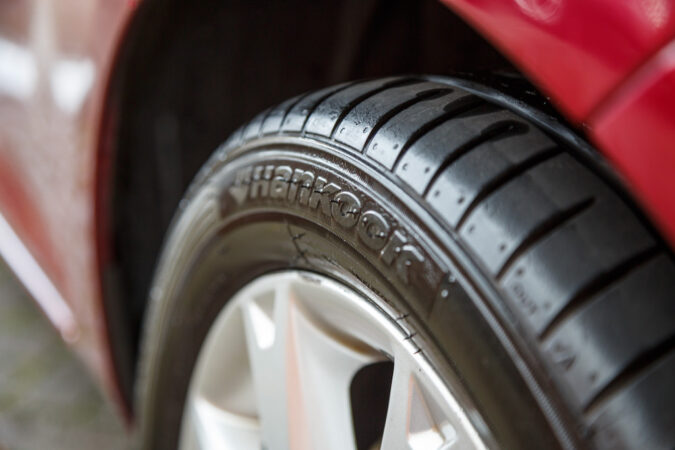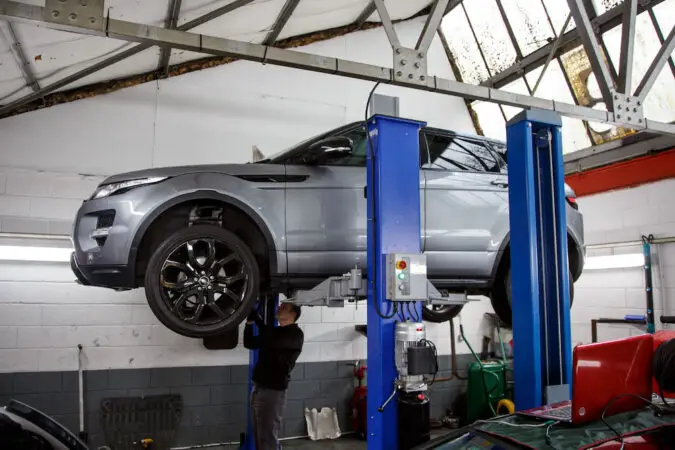How much does it cost to replace tire sensor? Since tire pressure sensors vary depending on the manufacturer, this is a common query from drivers regarding their vehicles. It is crucial to be aware of the condition of your car’s tires because they pose a significant risk.
The low-pressure warning light or the message “Tire Pressure Sensor Fault” appears on the dashboard when you are enjoying a pleasant drive to your vacation location. This can be challenging even for seasoned drivers, so it is suggested that the technician is indeed the ideal person to handle cost to replace tire sensor.
Tire pressure measurements in the past required the use of a tire gauge. Today, however, monitoring technology helps guarantee appropriate tire pressure values. Read further about tire pressure, the operation of the sensors, their signs, and solutions in this blog.
- Tire Pressure Sensor Fault
- TPMS Sensor Replacement
- TPMS Sensor Replacement Cost
- TPMS Battery Replacement
- Frequently Asked Questions
TPMS Sensor
The TPMS or Tire Pressure Monitoring System is responsible for continuously measuring and assessing tire pressure. The onboard computer is connected to the tire pressure sensors, which are in the valve systems, which measure the real values.
Based on the monitored pressure, TPMS may do one of the following.
Utilizes wheel speed sensors from the anti-lock braking system as an indirect TPMS. It makes use of the theory that tires with low air pressure have smaller tires overall.
The onboard computer of this device analyses the tire rotation measurements to determine whether or not the tire has the right pressure. If not, the dashboard’s low tire pressure light will turn on.
Direct TPMS: As the name implies, this system employs sensors that detect tire pressure and transmit the result to the computer. These battery-powered sensors collect tire pressure data and transmit it to a centralized control system. Some of the sensors can gauge tire temperature as well.
Tire Pressure Sensor Fault
Modern vehicles come pre-configured with a mechanism that continuously checks the tire pressure. The safety feature can help avoid breakdowns or even accidents by informing a driver in advance of a slow leak.
Therefore, it can be unpleasant and possibly dangerous when a car’s dashboard displays the tire pressure sensor failure notice. And, when it does fail, you will need to consider a tire sensor replacement. Let’s investigate this further so you can learn what this means for both you and your vehicle.
A tire pressure sensor issue indicates a problem with the vehicle’s Tire Pressure Monitoring System (TPMS). When a tire’s air pressure is excessively high or low, the light may occasionally turn on to alert you to the issue. Other times, it shows that the system is faulty.
Consult your owner’s manual to learn the distinctions.
Location Of The Tire Pressure Sensor
There is a tire pressure sensor in each tire and often fastens to a valve stem which you will use to inflate the tires (make sure you also know how to put air in tires at gas station). Each tire has one, thus any of them may be the cause of the issue that causes a problem or warning to appear on the dashboard.
Causes Of Blinking Tire Pressure Sensors
There are a few potential causes for the tire pressure sensor warning light to be blinking.
1. Low Tire Pressure
A blinking TPMS light may tell you that pressure in one tire is low depending on the vehicle. By pressing a button, you can view the air pressure across all four tires in some vehicles which allows you to monitor the pressure from the interior.
Other vehicles will only issue a warning if the pressure is insufficient. Then you must go outside and inspect each of them using a tire gauge. Check to see that each tire’s pressure is to the manufacturer’s specifications. To find out more, check out our guide on how to fix tire pressure.
2. A Failed Tire Pressure Sensor
Batteries in tire pressure sensors may run out. However, if they don’t have any more juice, a dashboard alert will appear.
They often last for a significant amount of time. Sometimes times, the sensors may get old or corroded and quit working, resulting in a warning similar to this one. If the sensor breaks down, it needs replacing in any case. It’s important that you know therefore the cost to replace tire sensor or ponder on the tire pressure sensor replacement.
3. Sensor Connection Lost
The computer in the automobile receives information from the sensors inside the TPMS system. The system will broadcast a fault well over the dashboard if there is an interruption of the connection. That might occur if you run into a hard bump or in various situations.
4. New Tires Or Wheels
You might have to reset the system if you recently fitted a new set of wheels on your automobile or mounted fresh tires on your current set of wheels.
This is due to the fact that modifications on the tire and wheel setup necessitate reconnecting the system with either the old or new sensors. Additionally, the automobile can anticipate a different pressure from what you have set, depending on the alterations you make.
For instance, you might need to alter the system’s pressure needs if you recently switched from winter to summer wheels.
5. Altering Conditions And Temperatures
When the temperature fluctuates considerably over a short period of time, many users experience problems with their TPMS sensors. This is because air pressure influences the pressure inside your tires.
The sensors will detect less pressure when it is very cold. Additionally, the pressure will rise as it warms.
TPMS Sensor Replacement
Large maintenance duties bother a lot of drivers, but the ‘small’ things are frequently the most inconvenient. Troubleshooting the tire sensor issues appears to be simple. However, if your TPMS light is on, you should note that things are more complex than they appear.
1. Not All Tire Pressure Sensors Are The Same
Using a tire pressure gauge, you may check the pressure of your car’s tires to see if they have the right pressure.
Tire pressure sensors are gauges that are part of your car’s TPMS. Additionally, if the vehicle is a 2008 model or later, it contains these sensors because of the TREAD Act. But the type frequently varies between models and brands.
There are two types of TPMS technology: direct and indirect. Indirect systems use ABS sensors to gauge wheel rotation.
These sensors will detect under-inflation if they notice one tire spinning more quickly than it should, which will turn on the well-known warning light. Direct systems, in contrast, rely on unique sensors that are on each wheel.
These accurately gauge the tire’s air pressure and wirelessly transmit that data to a central unit through radio signals. And a sensor that detects that tire pressure is 25% or more below the suggested level activates the warning light.
It makes sense that you can’t swap direct tire pressure sensors for indirect ones or vice versa since these systems are so dissimilar.
Direct sensors cannot, however, always be switched between vehicles. NAPA notes this is because there are two different sorts of direct sensors.
The valve stem type describes certain direct tire pressure sensors. They are essentially sensors with attached valve stems. ‘Banded type’ sensors, on the other hand, are, well, bands placed to the wheel 180 degrees away from the valve stems. Once more, banded sensors and valve stem sensors cannot be used interchangeably.
2. Make Sure Your Wheels Are Compatible
Tire pressure sensors are often only dealt with by drivers when they or the entire TPMS are malfunctioning.
Typically, that entails a flashing error message or warning light. Things also become a problem if, you have different sets of wheels and tires for the winter and the summer.
Sure, one can have a single set of wheels but also change the tires as needed depending on the conditions.
But without a special machine, changing tires is difficult. And you only have to pay them once; you shouldn’t need to pay them on many occasions to get the tires on. Well, twice: in winter and in the spring/summer. Therefore, using different wheels for each season keeps costs down.
3. What If Your Car Features TPMS
You still require two pairs of tire pressure sensors if your car has TPMS, though. If not, the warning light will be on all winter. If the tires have low pressure, you wouldn’t know without inspecting them.
There is yet one more difficulty with this. Technically, the TREAD Act I previously mentioned does not impose any obligations on aftermarket vendors.
Because of this, not every aftermarket set of wheels is TPMS-compatible. In fact, the TREAD Act requires tire shops to avoid using aftermarket components that would deactivate the TPMS. But even then, there’s no guarantee that absent further alterations, your flashy wheels won’t flash warning signals.
Check the numbers as well as wireless frequencies before replacing a tire pressure sensor because they can be pricey.
Is the lesson to steer clear of budget tire pressure sensors? Yes and no. True, inexpensive parts are cheaper for a reason.
However, in this instance, the cost was not always the problem. It turns out that while TPMS sensors (aka the tire pressure ‘TP’ sensor) talk to one another across radio frequencies, they don’t do so at the same frequency.
According to Edmunds, high-line systems are much more expensive but allow automobiles to show tire pressures for specific tires.
Additionally, their sensors only send data when the automobile signals them to. On the other hand, sensors in low-line systems only occasionally transmit data.
Although they are less expensive, they cannot show individual tire pressures. Additionally, these sensors may crosstalk if there is improper programming.
TPMS Sensor Replacement Cost
It’s crucial to maintain proper tire pressure (you can learn more in our guide on the tire pressure for Honda CRV), therefore if your TMPS indicator illuminates on the dashboard, one or several of your tires may be underinflated. Instead, if the “Service Tire Monitor System” light is blinking, it may be time to pay the cost to replace tire sensor.
The safe operation of your car depends more than ever on its tires. This is the reason why vehicles after 2007 require a TPMS.
This battery-operated sensor will alert you before it’s too late if there is a major change in tire pressure or if new tires are necessary.
Cost To Replace Tire Sensor: Price Of A Tire Pressure Sensor
Whether you decide to have a dealership or even a private mechanic replace your tire pressure sensor, the cost of this procedure will be impacted by variables including the location and the kind of vehicle.
The majority of specialists will charge a minimum cost plus the components because this job often takes less than an hour to do. The cost to replace tire sensor can range from $80 to $130 per wheel, with the components sometimes costing less than $30.
In the US, a replacement pressure sensor typically costs roughly $80. Visitors to YourMechanic.com received repair estimates ranging between $78 and $140, with premium brands like Mercedes costing the highest.
You might also be interested in our articles on the price of a run-flat tire, how much it costs to replace a tire valve stem, or where to buy tires at Walmart.
The cost of Pep Boys’ TPMS replacement service is reasonable. Starting at $20 per sensor, the price goes up by $17 if you own a hybrid car.
Steve Jenkins discovered that he could spend more than $800 to replace 4 tire pressure sensors in his nearby dealership. Anyway, he changed them at his neighborhood Discount Tire for $30 each extra $20.
A Costco employee claimed that while rebuilding tire pressure sensors costs only $15 per tire, replacing them costs $70.
Cost To Replace Tire Sensor: How Can I Cut Costs
If a part is still under warranty, your dealership will often pay for the replacement.
Avoiding the effort of seeking another in stock, could help save money and time. Our investigation revealed that many renowned tire shops, including Discount Tire and Belle Tire, charge between $14 and $18 per wheel to install a new tire.
A fantastic source to purchase new sensors for the car is from aftermarket vendors who deal with over 100+ OEM components. These universal sensors, like any third-party component, can be significantly less expensive or just as trustworthy as the original equipment.
It might be worthwhile to get in touch with a few tire shops in your neighborhood can save money and time. If you buy the parts on your own, they will install brand-new sensors for you.
TPMS Battery Replacement
The TPMS system normally uses TPMS sensors implanted inside the tires to detect low tire pressure and alert you when a tire is dangerously low on air. The majority of TPMS sensors are powered by internal batteries that cannot be changed.
A TPMS sensor’s lithium batteries have a lifespan of five to ten years. The number of radio frequency broadcasts the TPMS sensor batteries transmit determines how long they will last, which makes prediction difficult.
1. The TPMS Sensor Battery
The TPMS battery life of the sensor will come down to the level of driving that you do over a duration of time as well as the conditions you drive the car in.
Colder temperatures have a smaller impact on the sensor battery life than hotter ones. Making regular stops and driving has a bigger impact on TPMS battery life compared to maintaining a constant pace.
This is brought on by the fact that as a vehicle changes speed, sensors emit even more radio frequency signals.
When a TPMS sensor’s battery runs out, the system will emit a malfunction alert, which will be indicated by a blinking TPMS light on the dashboard.
The light could either go on flashing or go solid after sixty to ninety seconds. In case you get this warning, schedule a repair appointment as soon as you can. However, you should also take a look at the pressure in each tire immediately once to make sure it is inflated safely.
2. Replacing TPMS Sensor
If just one of the TPMS sensors breaks down and needs to be changed, you can change each one independently. On the other hand, if the issue was due to a low sensor battery, the other TPMS sensors are probably about to fail as well.
Whenever you think about the time or the inconvenience of taking your vehicle somewhere for a sensor change, you might want to actively change all the sensors so you leave with fresh sensor batteries.
Since the TPMS battery is normally integrated into the sensor device, it can’t be changed independently. Therefore, in case the battery is low or even dead, the whole TPMS sensor needs to be replaced; the cost of this repair can be anywhere from $50 to $150 or even more, based on the use and kind of sensor.
Despite the fact that TPMS has existed since the 1990s and was mandated for all new automobiles since 2008, original equipment TPMS sensors are not at all standardized.
The good news is that several aftermarket providers have created universal sensors which can take the place of over 100 different OEM sensors with just a few SKUs and cost significantly less than the OEM sensors. These sensors are easy to program for use in vehicles and reduce the requirement for inventory.
TPMS Sensor Installation
Two basic categories of aftermarket TPMS devices exist. In one form, sensors are mounted within the tires, while in the other, sensors are incorporated into the valve stem caps. The cap type can only be installed at home.
Make sure you have the following before starting a cap-based installation:
Sufficient sensors for the tires: Most cars only require four sensors, but if your vehicle has two rear wheels, you’ll need six. Verify that the sensors were created with your tires’ air pressure in mind.
A receiver gadget designed to work with the sensors: Most kits include a receiver as well as sensors. Verify the compatibility of the sensors and the receiver.
Cost To Replace Tire Sensor, Installation #1: The Used Valve Stem Covers
The previous valve stem caps are necessary should you require to replace the sensors or move them to another car. Keep note of the cost to replace tire sensor.
You don’t require an anti-seize compound to finish the installation; it is an optional step. Metal sensors cannot become trapped on the valve stems thanks to anti-seize.
Cost To Replace Tire Sensor, Installation #2: The Valve Stem Caps
Take off the valve stem caps but also keep them safely stored.
Go to the next step if you’ve just checked the tire pressure. However, if it’s been a while, check the tire pressure. Prior to installing the sensors, check the tire pressure and raise it if necessary.
Every car has different needs. If you are unsure of the tire pressure requirements, see your car owner’s manual, the specs decal, or the sidewalls of the tires.
Cost To Replace Tire Sensor, Installation #3: Adjusting The TPMS
Adjust the TPMS. You cannot calibrate other systems, while some are simple to calibrate. Set your system to the precise pressure your car requires if you’re able to calibrate it. Additionally, you might be able to choose the level at which the TPMS warms you. Knowing the alarm point is crucial because some monitors don’t display the actual tire pressure.
Choose a system that is compatible with the pressure in the tires if you must get one that you cannot calibrate. For instance, if you purchase TPMS calibrated to 50 PSI but your tires only need 35 PSI, the TPMS alarm lights will turn on even though your tires are properly inflated.
Cost To Replace Tire Sensor, Installation #4: Put The Sensors In Place
Tire pressure sensors with caps are simple to install. You won’t have any trouble working on the car even if you’ve got no prior knowledge. The sensors are often simply connected on in lieu of the valve stem caps.
The sensors should not be cross-threaded because a tight seal is required for the TPMS to function. Because the valves hold back pressure, standard valve stem caps are ineffective. But like every other tire pressure gauge, cap-based TPMS sensors press the valves.
Check to see if the tire pressure sensor is receiving a signal from every tire by turning it on. If not, perform a troubleshooting process to identify the issue.
Cost To Replace Tire Sensor, Installation #5: How To Set Up A TPMS Internal Sensor
Release air out of each tire, break beads on each tire, take out the valve stems, and then swap the valve stems and in their place put the pressure sensors to add an aftermarket tire pressure monitor which utilizes internal sensors.
The two best options if you want a system with sensors integrated into the valve stems are to hire a mechanic or take out the tires at home and then take them to a tire shop to have the sensors fitted.
Frequently Asked Questions
How Much Does It Cost To Replace A Tire Pressure Sensor
The typical cost of a sensor is $30 to $75, and labor expenses range from $10 to $35. Consequently, the typical cost of repairing a tire sensor might range from $40 to $100.
Where Is The TPMS Sensor Located
Where is the location of the tire pressure sensor? It is affixed to the interior of the rim from inside the tire. The TPMS sensor is a little cylinder that you can see if you take the tire off the rim.
How Much Does It Cost To Change A Tire
Depending on the manufacturer and quality, replacing a single normal tire might cost anywhere between $50 and $200. Large cars like SUVs and others might cost as much as $350. Pick-up trucks and other large trucks typically have similar prices. In general, replacing all of your tires at once is a wise idea.

